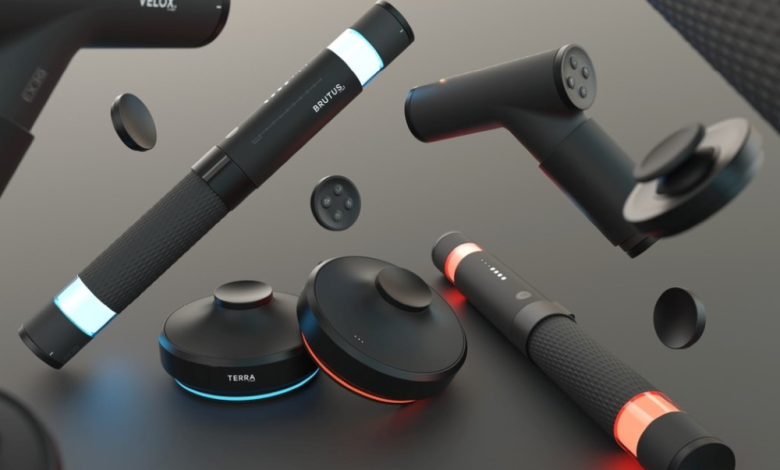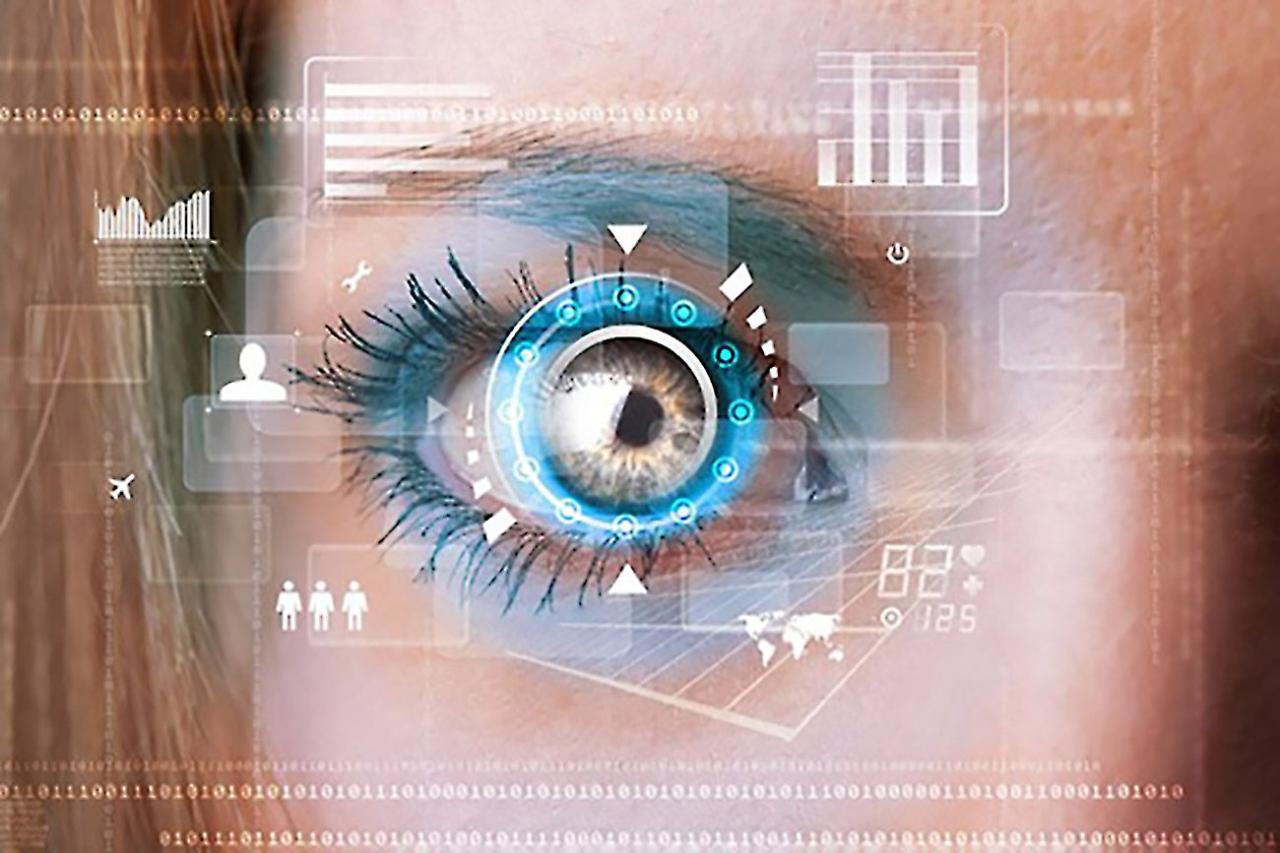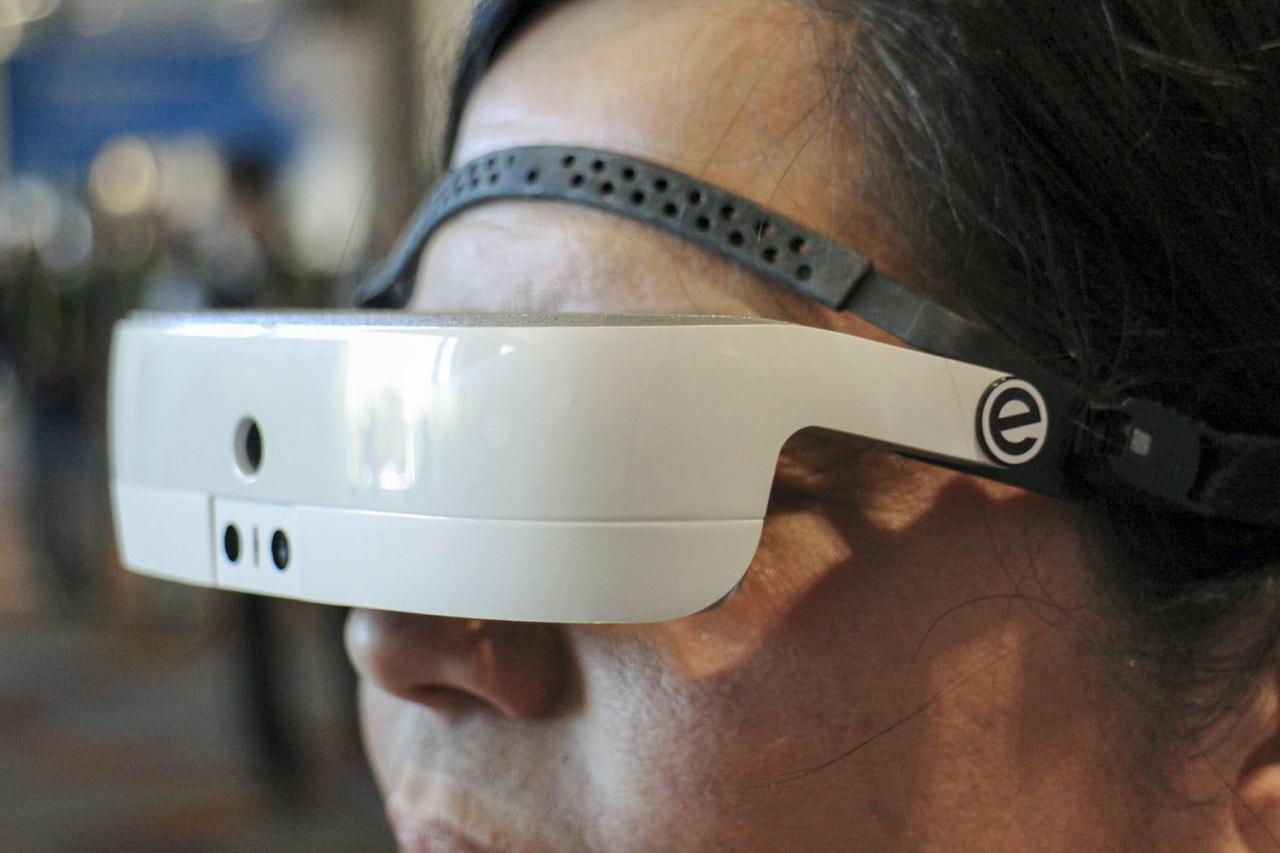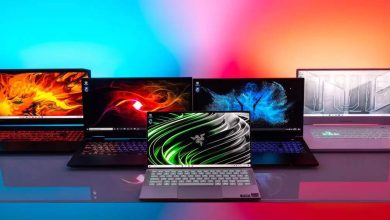Game-Changing Gadgets Shift Consumer Tech Trends

In today’s fast-paced digital world, the emergence of groundbreaking gadgets is not merely transforming how we interact with technology—it is reshaping entire consumer tech trends. From smart wearables to advanced home automation systems, innovative devices are driving a new era of connectivity, convenience, and efficiency. This article explores how these game-changing gadgets are influencing consumer behavior, altering market dynamics, and paving the way for future technological advancements. With a comprehensive look at trends, technological breakthroughs, and real-world applications, we delve into how modern gadgets are setting new standards in the tech landscape.
The Evolution of Consumer Gadgets
The history of consumer electronics is marked by continuous innovation. Over the past few decades, gadgets have evolved from bulky, single-purpose devices to sleek, multifunctional tools that integrate seamlessly into our daily lives. This evolution is driven by several key factors:
A. Advancements in Microelectronics
The miniaturization of electronic components has enabled manufacturers to pack more power into smaller devices. With improvements in microprocessors and battery technology, gadgets today are not only more compact but also more efficient and capable of performing complex tasks.
B. Internet Connectivity
The advent of high-speed internet and wireless communication has connected gadgets in ways previously unimaginable. Whether through Wi-Fi, Bluetooth, or cellular networks, devices now interact with each other, creating a cohesive ecosystem that enhances user experience.
C. Integration of AI and Machine Learning
Artificial intelligence (AI) and machine learning (ML) are embedded in many modern gadgets, allowing them to learn from user interactions and optimize performance. These technologies enable smart recommendations, personalized settings, and predictive maintenance, making gadgets smarter and more adaptive.
D. Design and User Experience
A significant focus on user-centric design has transformed the aesthetics and functionality of gadgets. Manufacturers prioritize intuitive interfaces, sleek designs, and ergonomics, ensuring that devices are both attractive and easy to use.
How Gadgets Influence Consumer Behavior
The rapid adoption of innovative gadgets has led to a noticeable shift in consumer behavior. As devices become more integrated into everyday life, they change not only how we perform tasks but also our expectations and lifestyle choices.
A. Increased Reliance on Smart Devices
Consumers are increasingly dependent on smart devices to manage daily activities. From fitness trackers that monitor health to smart speakers that control home environments, gadgets are central to creating a connected lifestyle.
B. Demand for Personalization
Modern consumers expect technology to cater to their individual needs. Gadgets that offer customizable features and personalized experiences are highly valued, driving manufacturers to focus on flexibility and adaptability.
C. Emphasis on Convenience and Efficiency
The modern consumer seeks convenience. Devices that simplify routine tasks—such as automated home systems or voice-activated assistants—are in high demand. This focus on efficiency drives the market toward innovations that reduce complexity and save time.
D. Shifts in Purchasing Decisions
As consumers become more informed and tech-savvy, their purchasing decisions are influenced by reviews, online comparisons, and social media trends. The impact of digital marketing and influencer endorsements is significant, steering trends and creating buzz around new releases.
Game-Changing Gadgets Redefining the Market
Innovative gadgets are continuously entering the market, each promising to change the way we live and work. Below are some categories of devices that are at the forefront of this revolution:
A. Wearable Technology
Wearable devices have evolved from simple fitness trackers to sophisticated smartwatches and health monitors. These gadgets offer real-time data on physical activity, heart rate, sleep patterns, and even stress levels. They empower users to take control of their health by providing actionable insights and personalized recommendations.
- Smartwatches: Devices that do more than tell time; they offer notifications, GPS tracking, and integration with smartphones.
- Fitness Bands: Compact devices designed to monitor daily activity and promote healthier lifestyles.
- Health Monitors: Advanced wearables capable of tracking vital signs and alerting users to potential health issues.
B. Smart Home Devices
The concept of a “smart home” is rapidly becoming a reality. Modern smart home gadgets enhance security, improve energy efficiency, and offer unparalleled convenience. Key innovations in this area include:
- Smart Speakers and Assistants: Devices like smart speakers provide voice-activated control of home environments, from playing music to managing schedules.
- Home Security Systems: Advanced systems that integrate cameras, sensors, and alarms, ensuring a secure living environment.
- Connected Appliances: Refrigerators, ovens, and other appliances that can be controlled remotely, streamlining household management.
C. Augmented Reality (AR) and Virtual Reality (VR)
AR and VR technologies have transcended the realm of gaming and entertainment. These immersive technologies are now being used in education, training, and even remote work, offering new ways to interact with digital content.
- AR Glasses: Wearable devices that overlay digital information onto the real world, enhancing everyday experiences.
- VR Headsets: Devices that transport users to entirely virtual environments for gaming, training simulations, and virtual meetings.
- Mixed Reality Devices: Gadgets that combine AR and VR to offer flexible, immersive experiences that bridge the physical and digital worlds.
D. Internet of Things (IoT) Devices
The IoT connects everyday objects to the internet, enabling seamless communication and data exchange. This network of interconnected devices is revolutionizing industries such as healthcare, manufacturing, and logistics.
- Smart Sensors: Devices that collect data from various environments, contributing to smarter cities and more efficient industries.
- Connected Vehicles: Modern automobiles equipped with sensors and internet connectivity, paving the way for autonomous driving.
- Industrial IoT Solutions: Gadgets that monitor and optimize industrial processes, improving safety and efficiency.
E. Personal Mobility Devices
The transportation sector is experiencing a wave of innovation with the introduction of personal mobility devices. These gadgets offer eco-friendly, efficient solutions for urban transportation.
- Electric Scooters: Compact and efficient, these devices are ideal for short-distance urban travel.
- E-Bikes: Electric bicycles that offer a sustainable and health-conscious alternative to traditional transportation.
- Personal Electric Vehicles: Devices like hoverboards and electric skateboards that combine fun with practicality.
Technological Innovations Driving the Shift
The impact of these game-changing gadgets is largely due to significant technological advancements that support their functionality and enhance their capabilities.
A. Miniaturization and Enhanced Performance
The shrinking size of components without sacrificing performance has been a major catalyst in gadget innovation. Smaller, more powerful chips, and energy-efficient batteries have allowed manufacturers to design devices that are both portable and robust.
B. Cloud Computing and Big Data
The integration of cloud computing has enabled gadgets to process and store vast amounts of data. Big data analytics allows devices to learn from user behavior and continuously improve performance, providing a more tailored experience.
C. Advanced Connectivity Solutions
Technologies such as 5G and Wi-Fi 6 are revolutionizing connectivity by offering faster speeds, lower latency, and more reliable connections. This advancement is crucial for real-time data exchange and seamless integration of multiple devices.
D. Cutting-Edge Software Development
Modern gadgets benefit from sophisticated software that enables enhanced functionality and user experience. The rapid pace of software development, driven by agile methodologies and continuous integration, allows for frequent updates and improvements, ensuring that devices remain current and competitive.
The Economic Impact of Game-Changing Gadgets
The rise of innovative gadgets is not just a technological phenomenon—it has profound economic implications as well. The consumer tech industry is experiencing significant shifts due to the introduction of new, disruptive devices.
A. Market Disruption
Innovative gadgets often disrupt established market segments by offering superior functionality or more cost-effective solutions. This disruption forces traditional manufacturers to adapt or risk becoming obsolete.
B. Job Creation and Industry Growth
The development, production, and maintenance of advanced gadgets create numerous job opportunities across various sectors, including research and development, manufacturing, marketing, and technical support. The ripple effect of these innovations stimulates economic growth and fosters a dynamic job market.
C. Increased Consumer Spending
As gadgets become more integral to daily life, consumer spending on technology continues to rise. This trend is driven by the constant desire to stay updated with the latest innovations and the increasing integration of technology in everyday activities.
D. Global Supply Chain Evolution
The production of advanced gadgets requires complex global supply chains. As demand for these devices increases, manufacturers must optimize their logistics and distribution networks. This evolution in supply chain management leads to more efficient production processes and a stronger global market presence.
Challenges in Adopting New Gadgets
While game-changing gadgets offer immense benefits, they also come with challenges that must be addressed to fully harness their potential.
A. Security Concerns
With increased connectivity comes the risk of cyber threats. As gadgets become more interconnected, ensuring data privacy and protection against cyberattacks becomes paramount. Manufacturers must continually update security protocols to safeguard user information.
B. Compatibility Issues
The integration of new gadgets with existing systems can sometimes lead to compatibility issues. Ensuring that new devices seamlessly connect with legacy systems and platforms is essential for a smooth user experience.
C. High Initial Costs
Cutting-edge technology often comes with a high price tag, which can be a barrier for some consumers. As the market matures and production costs decrease, prices are expected to drop, making advanced gadgets more accessible.
D. Rapid Technological Obsolescence
The fast pace of technological innovation means that gadgets can quickly become outdated. Consumers must weigh the benefits of investing in the latest technology against the risk of rapid obsolescence. Manufacturers, on the other hand, must focus on creating upgradeable and future-proof solutions.
E. Environmental Impact
The production and disposal of electronic gadgets have environmental implications. Sustainable practices in manufacturing, recycling programs, and energy-efficient designs are critical to minimizing the ecological footprint of new technologies.
Strategies for Maximizing Gadget Benefits
For both consumers and businesses, the key to success lies in effectively adopting and integrating these transformative gadgets. Here are some strategies to maximize their benefits:
A. Informed Purchasing Decisions
- Research Thoroughly: Evaluate product reviews, performance benchmarks, and real-world use cases.
- Compare Alternatives: Look at multiple brands and models to ensure the best value for money.
- Consider Future Upgrades: Invest in devices that offer modular designs or upgrade paths.
B. Seamless Integration
- Leverage Ecosystems: Choose gadgets that integrate well with your existing tech ecosystem.
- Standardize Software Platforms: Utilize common software frameworks to reduce compatibility issues.
- Regularly Update Firmware: Keep devices secure and functional with the latest updates.
C. Employee Training and Adoption
- Conduct Training Sessions: For business environments, ensure employees are comfortable with new gadgets.
- Implement Pilot Programs: Gradually introduce new technology to gauge its effectiveness before full-scale adoption.
- Encourage Feedback: Create channels for users to share their experiences and suggest improvements.
D. Emphasize Security Measures
- Utilize Multi-Factor Authentication: Strengthen access controls on connected devices.
- Encrypt Data: Protect sensitive information transmitted by gadgets.
- Monitor Networks: Use advanced monitoring tools to detect and mitigate potential threats.
E. Foster a Culture of Innovation
- Encourage Experimentation: Allow teams to explore and experiment with new devices.
- Invest in R&D: Support research and development initiatives to stay ahead of trends.
- Collaborate with Tech Partners: Leverage expertise from industry leaders and innovators.
Real-World Applications and Success Stories
The transformative power of game-changing gadgets is evident in various real-world applications. Here are a few examples that illustrate their impact:
A. Smart Retail Experiences
Retailers are integrating advanced gadgets to enhance the shopping experience. Smart mirrors in fitting rooms allow customers to try on virtual outfits, while interactive kiosks provide product information and personalized recommendations. These innovations are not only boosting sales but also transforming customer engagement.
B. Healthcare Innovations
Wearable devices and smart monitors are revolutionizing healthcare. From remote patient monitoring to AI-driven diagnostics, these gadgets enable more personalized and efficient medical care. Hospitals are increasingly relying on connected devices to track patient vitals in real time, leading to improved outcomes and reduced hospital stays.
C. Educational Enhancements
In the education sector, augmented reality (AR) and virtual reality (VR) are making learning more immersive. Classrooms equipped with AR glasses and VR headsets are providing interactive experiences that enhance comprehension and retention. This shift is preparing students for a future where digital fluency is key.
D. Automotive Advancements
Modern vehicles are now equipped with smart technologies that enhance safety and driving experience. Connected dashboards, advanced navigation systems, and real-time vehicle diagnostics are just a few examples. These innovations are driving the evolution of autonomous driving and smart transportation systems.
E. Remote Work Revolution
The rise of remote work has been accelerated by gadgets that facilitate seamless communication and collaboration. Video conferencing tools, smart whiteboards, and cloud-connected devices have redefined the modern workplace, ensuring productivity and connectivity regardless of location.
Future Predictions and Emerging Trends
Looking ahead, the trajectory of gadget innovation suggests several exciting trends that are likely to shape the consumer tech landscape in the coming years.
A. Ubiquitous AI Integration
Artificial intelligence will become even more deeply embedded in gadgets, enabling them to anticipate user needs, provide proactive solutions, and adapt to individual preferences with unparalleled precision.
B. Expansion of IoT Ecosystems
The network of connected devices will continue to expand, creating smarter homes, cities, and industries. The seamless integration of IoT devices will drive efficiency, reduce waste, and enable real-time decision-making on a global scale.
C. Advancements in AR and VR
As augmented and virtual reality technologies mature, their applications will extend beyond entertainment. Education, training, and remote collaboration will benefit from immersive digital experiences that blur the lines between the physical and virtual worlds.
D. Sustainable and Eco-Friendly Gadgets
Environmental concerns will drive the development of gadgets that are energy-efficient and made from sustainable materials. Innovations in recycling and modular designs will help reduce electronic waste and promote a greener tech industry.
E. Enhanced Personalization and Customization
Consumer expectations for personalized experiences will push manufacturers to develop gadgets that offer high levels of customization. From adaptable user interfaces to tailored functionalities, the focus will be on delivering a unique experience for every user.
The Role of Consumer Feedback and Market Dynamics
The success of game-changing gadgets is also influenced by the dynamic interplay between manufacturers and consumers. In today’s market, feedback loops play a critical role in refining and advancing technology.
A. Importance of User Reviews
- Authentic Experiences: Consumers rely on genuine feedback from peers to assess the reliability and functionality of new gadgets.
- Continuous Improvement: Manufacturers use user reviews to identify issues, adapt features, and innovate further.
- Market Validation: Positive reviews drive adoption, while constructive criticism leads to iterative improvements.
B. Influencer and Social Media Impact
- Viral Trends: Influencers and social media platforms can quickly propel a gadget into the spotlight.
- Real-Time Engagement: Consumers share their experiences online, creating a vibrant ecosystem of opinions and discussions.
- Brand Loyalty: Effective digital marketing strategies foster a community of loyal users who become brand ambassadors.
C. Data-Driven Product Development
- Analytics and Insights: Companies leverage big data to understand consumer behavior and tailor products accordingly.
- Rapid Prototyping: Agile development processes enable faster innovation cycles, allowing companies to bring refined products to market swiftly.
- Predictive Trends: Advanced analytics help forecast market trends, ensuring that new gadgets align with future consumer needs.
Challenges and Considerations for the Future
Despite the promising outlook, several challenges must be navigated as the industry moves forward:
A. Balancing Innovation with Privacy
As gadgets collect increasing amounts of personal data, striking the right balance between innovation and privacy will be crucial. Robust data protection policies and transparent practices are essential to maintain consumer trust.
B. Addressing the Digital Divide
While advanced gadgets offer remarkable benefits, ensuring equitable access remains a challenge. Bridging the digital divide through affordable technology and inclusive design will be vital for global progress.
C. Navigating Regulatory Landscapes
With rapid technological advancements come regulatory challenges. Policymakers and industry leaders must collaborate to create frameworks that encourage innovation while safeguarding public interests.
D. Managing Environmental Impact
As production scales up, the tech industry must prioritize sustainability. Implementing eco-friendly manufacturing processes and supporting recycling initiatives are essential steps toward mitigating environmental impacts.
Conclusion
Game-changing gadgets are redefining consumer tech trends, ushering in a new era of innovation, connectivity, and efficiency. From wearables and smart home devices to immersive AR/VR experiences and integrated IoT solutions, these advanced technologies are not only enhancing everyday life but also driving significant economic and social change.
The evolution of gadgets is a testament to human ingenuity and the relentless pursuit of progress. As manufacturers continue to push the boundaries of what is possible, consumers are reaping the benefits of a more connected, personalized, and efficient digital world. However, to fully realize the potential of these innovations, it is imperative to address the accompanying challenges—be it security, compatibility, or environmental sustainability.
For businesses, understanding these trends is key to staying competitive. By investing in the right technologies, fostering a culture of continuous innovation, and leveraging data-driven insights, companies can not only meet but exceed consumer expectations in this dynamic landscape.
As we look to the future, the convergence of advanced technologies and consumer-driven design will continue to reshape our world. The integration of AI, IoT, AR/VR, and sustainable practices promises to deliver even more sophisticated, user-friendly gadgets that will further transform the way we live, work, and interact. The journey ahead is filled with opportunities, and those who embrace these innovations will undoubtedly lead the charge into a smarter, more connected tomorrow.





